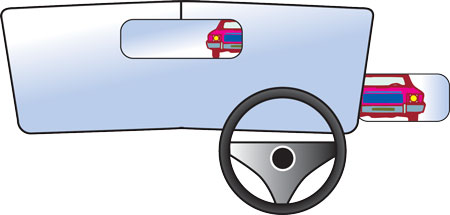Before driving, adjust your driver’s seat and mirrors.
The side mirrors should be adjusted so that they just catch a view of the edge of your car. As a guide, you should be able to just see the rear door handle in the bottom corner of the side mirrors.
When adjusted correctly there will be an overlap between the view from your rear and side mirrors. (See image below).

However, regardless of how well you set up your mirrors, there will be blind spots and you must remember to do a head check.